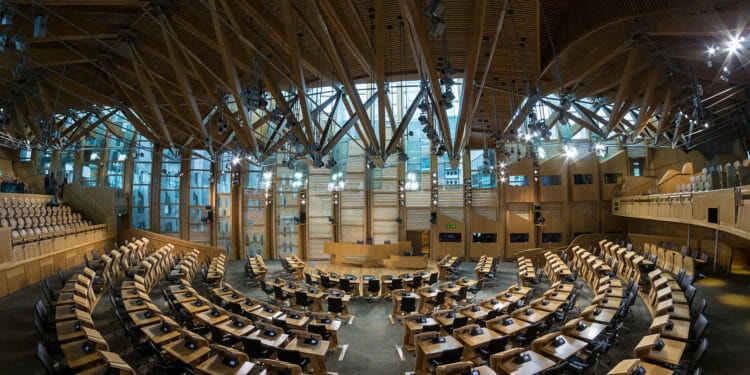A soon-to-be finalised “cooperation agreement” in Scottish parliament could see a Green Party enter government for the first time in British history, potentially turning the tide on Scotland First Minister Nicola Sturgeon’s Independence campaign whilst also laying the groundwork for increased climate action.
The Green Party is expected to negotiate the agreement via supporting the Scottish National Party (SNP) platform, something it has already done consistently on an ‘ad-hoc’ basis, in exchange for increased prioritisation of climate policies. This deal could bolster the nation’s climate standing ahead of its hosting duties at the COP26 in November, whilst also cementing Nicola Sturgeon’s control over the Scottish parliament.
The SNP fell just one seat short of a majority in May’s elections, and has formed a minority government over the past five years whilst relying on votes from the independence-backing Scottish Greens to pass legislation, including its annual budget. This new arrangement will provide a clearer majority for the government to pass legislation.
The proposal will also deliver the necessary numbers to lay the groundwork for a second Independence referendum, which both the Greens and the SNP have publicly supported.
According to the BBC, the Scottish cabinet met virtually on the morning of August 20 to approve the deal, which will see the Green’s eight parliament members join the SNP’s 64 to form an arrangement that is said to mirror one that the New Zealand Greens have with Jacina Ardern’s government.
Related Articles: 2021 Set To Be a Busy Year For Climate Negotiations| IPCC Warns Climate Catastrophe is Imminent: COP26 Success Must Be Ensured
The entente will not result in the formation of a full coalition government, instead of creating a non-binding “cooperation agreement” that will allow for divides where the Green and SNP platforms disagree.
The Scottish Green Party’s constitution requires any power-sharing agreements to be ratified by a full vote of its party members, which totals over 7,500 people, and two-thirds of its ruling council. This is expected to go ahead by August 28th, just days before Sturgeon unveils her government’s policy agenda for the next year in the Scottish parliament on August 31.
The Guardian reports that the Scottish Greens are expecting the deal to result in the appointment of two junior ministers from within the party, widely predicted to be the party’s co-leaders Patrick Harvie and Lorna Slater.
Historic draft agreement between @theSNP @scotgov and @scottishgreens will accelerate Scotland’s journey towards democratic renewal and independence in Europe with a strong pro-Indy majority in Scottish Parliament. 🏴🇪🇺🌍 #Scotland #Europe #indyref2 https://t.co/22znQj7JzH
— Angus Robertson (@AngusRobertson) August 20, 2021
The Greens should be expected to utilise their newfound legislative power to advance their own climate action policies, including reducing emissions in Scotland by 75% by 2030, increased renewable energy investment, and promotion of its Green Infrastructure Investment Plan.
In November, Glasgow will host the crucial COP26 conference, which will set the stage for key nations to negotiate long-term climate commitments and advance urgent environmental action proposals. The world’s focus will fall upon Scotland, and as such, visible progress on Scottish climate policy could serve as an example for much-needed agreements to come out of the critical United Nations conference.
Editor’s Note: The opinions expressed here by Impakter.com columnists are their own, not those of Impakter.com. — In the Featured Photo: Scottish Parliament Debate Chamber. Featured Photo Credit: Wikimedia Commons.














